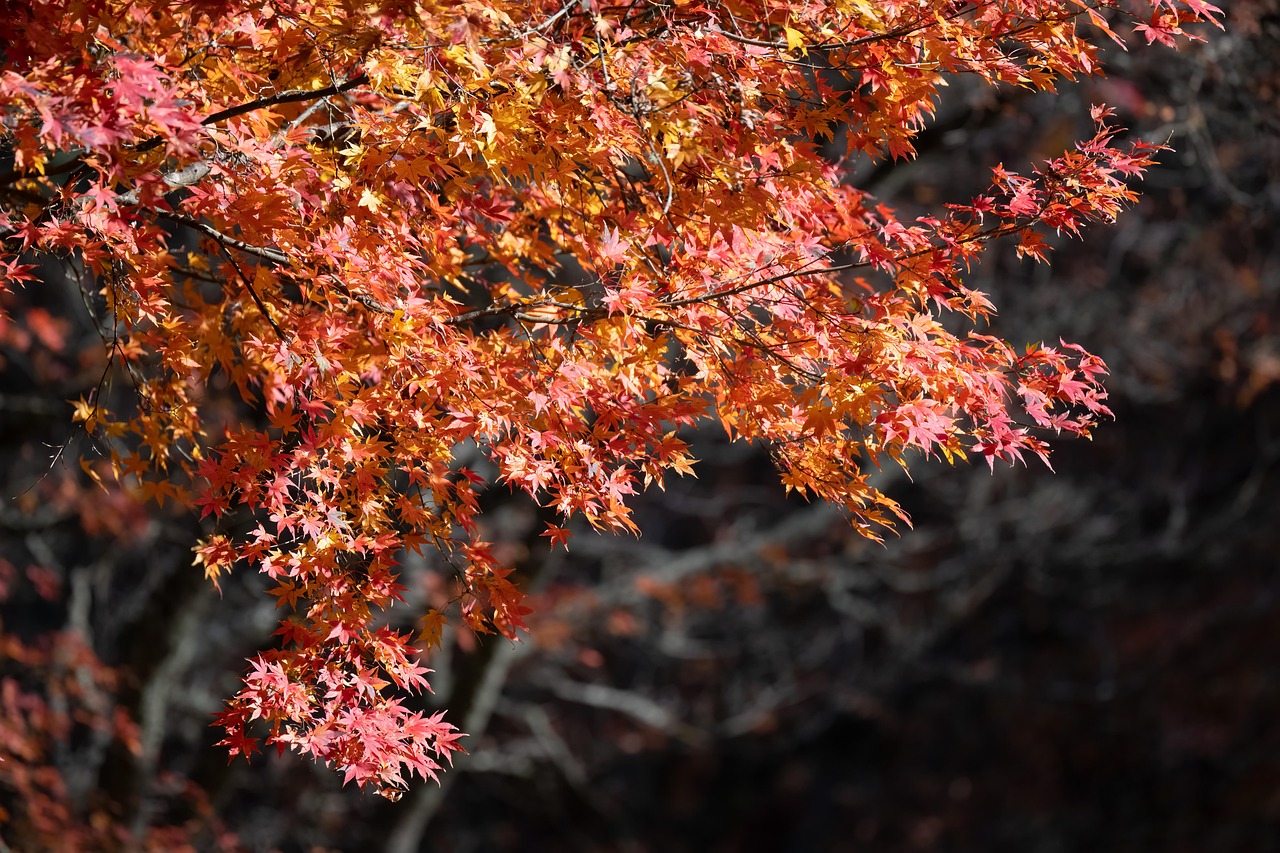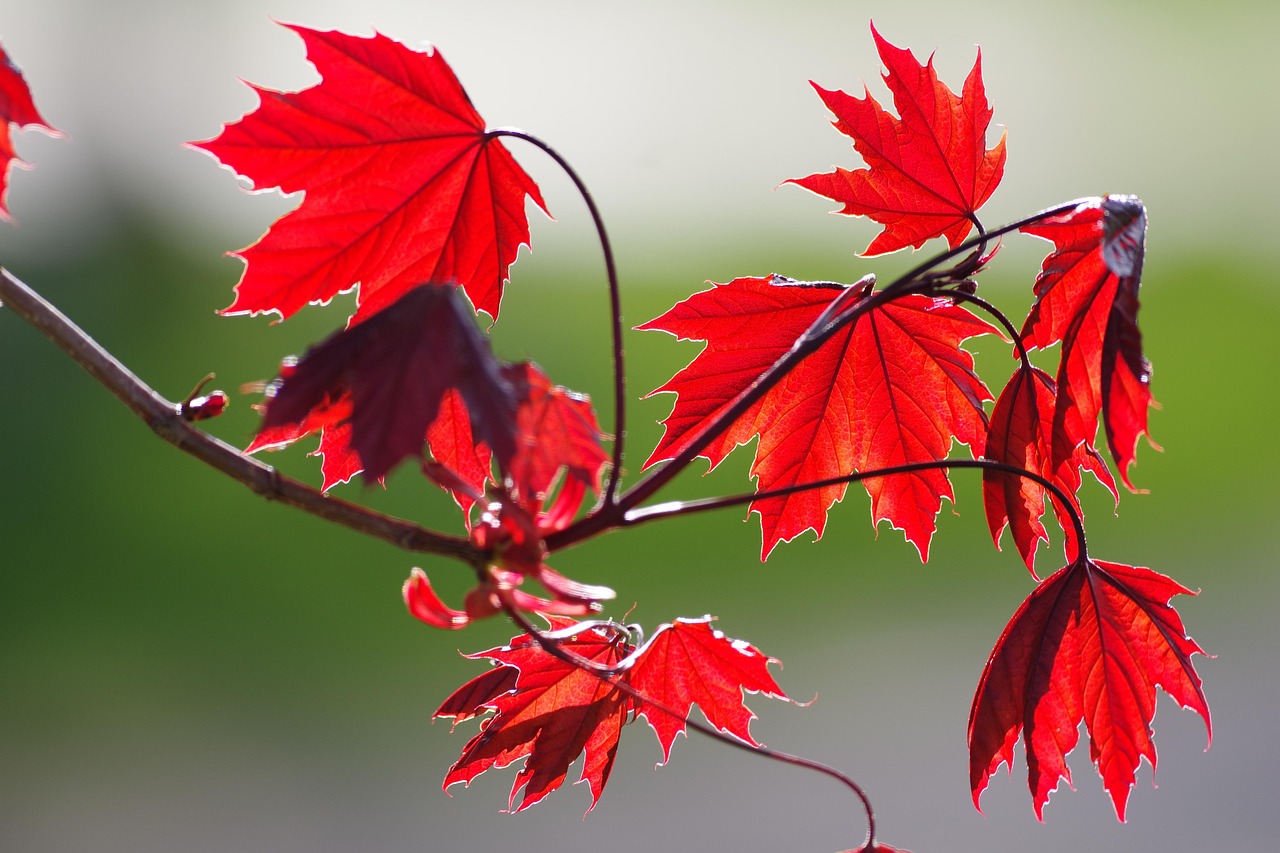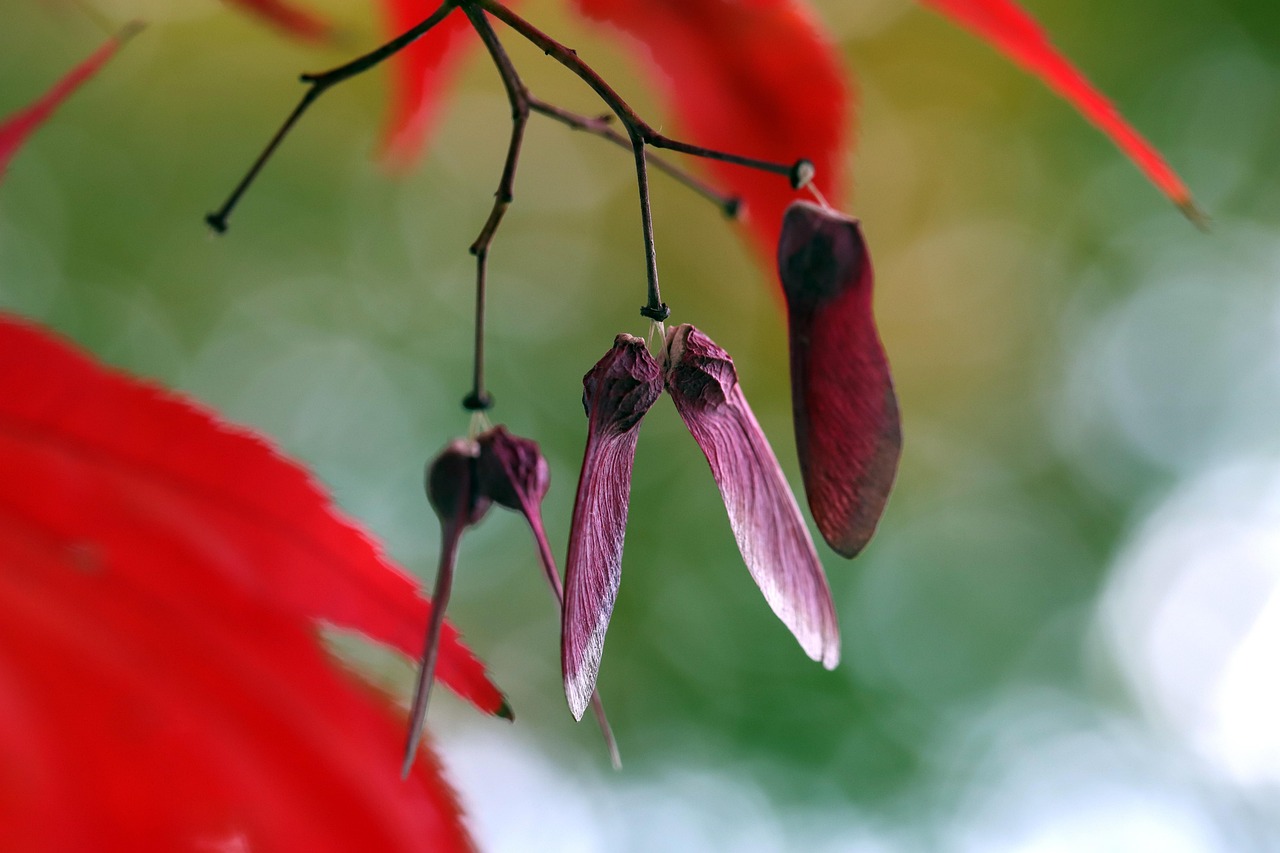Yes, red maple trees do produce seeds commonly referred to as “helicopters.” These seeds, known scientifically as samaras, have a unique wing-like structure that allows them to spin and glide when they fall from the tree.
Understanding Red Maple Trees

The red maple tree, known as Acer rubrum, is one of the most common and widespread trees in North America. It thrives in various environments, from wetlands to upland forests. These trees are renowned for their vibrant fall foliage, which ranges from yellow to deep red, making them a popular choice for landscaping and parks.
Red maples can grow to heights of 40 to 60 feet, with a trunk diameter of about 1 to 2 feet. Their rapid growth rate and adaptability contribute to their status as a favorite among both homeowners and landscapers. Aside from their aesthetic appeal, red maples also play an essential role in local ecosystems by providing habitat and food for various wildlife species.
Seed Production in Red Maples
Red maple trees are known for their prolific seed production. Each spring, they produce clusters of seeds that mature in late summer. The seeds are small, typically measuring around 1 inch long, and are encased in a distinctive winged structure. This structure allows the seeds to be carried away from the parent tree by the wind, aiding in their dispersal.
The seeds develop in pairs, with each seed attached to a wing that helps it spin as it falls. This spinning motion resembles that of a helicopter rotor, which is why many people refer to them as “helicopters.” The design of the samara maximizes the distance the seeds can travel, helping red maples colonize new areas effectively.
The Structure of Red Maple Seeds
The anatomy of red maple seeds is fascinating. Each seed consists of two main parts: the seed body and the wing. The seed body contains the embryo and nutrient reserves necessary for germination, while the wing aids in dispersal.
| Component | Description |
|---|---|
| Seed Body | Contains the embryo and nutrients for growth. |
| Wing | Facilitates wind dispersal by creating lift. |
| Size | Approximately 1 inch long. |
| Color | Typically light brown or tan when mature. |
When Do Red Maple Trees Produce Seeds?
Red maple trees begin producing seeds at around 5 to 10 years of age. The timing of seed production can vary based on environmental conditions. Generally, flowering occurs in early spring, followed by seed development throughout the summer months.
- Flowering: Early spring, before leaves fully emerge.
- Seed Maturity: Late summer, typically July to August.
- Dispersal Period: Seeds are dispersed in late summer to early fall.
The Role of Helicopter Seeds in Ecosystems
The unique design of red maple seeds plays a crucial role in their ecology. By enabling wind dispersal, these seeds can colonize new areas quickly. This adaptability ensures that red maples can thrive in various habitats and respond effectively to changes in their environment.
Moreover, these seeds serve as a food source for various wildlife species. Birds and small mammals often feed on the seeds during late summer and fall, contributing to the local food web. The presence of red maples can enhance biodiversity by providing habitat and resources for different organisms.
Identifying Red Maple Seeds
Identifying red maple seeds is relatively straightforward due to their distinct characteristics. The samaras are paired together and have a noticeable wing on one side. Here are some key identification tips:
- Shape: Look for a typical winged shape resembling a propeller.
- Color: Mature seeds are usually light brown or tan.
- Size: Each seed measures about 1 inch in length.
Being able to identify red maple seeds can be useful for gardening enthusiasts or those interested in ecology. Understanding seed types helps in appreciating the life cycle of trees and their role within their ecosystems.
Conclusion on Seed Types
The fascinating seed production of red maple trees showcases nature’s ingenuity. Their helicopter-like seeds not only illustrate adaptation but also underline the importance of these trees in our environment. Recognizing these seeds enhances our understanding of plant life and its interconnectedness within ecosystems.
The Germination Process of Red Maple Seeds
Once red maple seeds are dispersed, they enter a critical phase known as germination. This process transforms the seed into a new tree. Understanding the conditions required for successful germination is essential for those interested in growing red maple trees.
Conditions for Germination
Several factors influence the germination of red maple seeds. These include moisture, temperature, and light exposure. Here are the key conditions needed for optimal germination:
- Moisture: Seeds require adequate moisture to begin the germination process. A well-draining seedbed helps retain moisture while preventing rot.
- Temperature: The ideal soil temperature for germination is between 60°F and 70°F (15°C to 21°C). Temperatures below or above this range can hinder growth.
- Light: Red maple seeds do not require light to germinate; however, once they sprout, young plants need sufficient light for healthy growth.
Germination Timeline
The timeline for germination can vary based on environmental conditions. Generally, red maple seeds will germinate within a few weeks to a couple of months after being planted. The following stages outline the typical germination process:
- Seed Soaking: Seeds absorb water and swell, initiating the germination process.
- Radicle Emergence: The first root, called the radicle, emerges from the seed, anchoring it into the soil.
- Seedling Development: Leaves start to develop as the seedling grows upward towards light.
Growing Red Maple Trees from Seed
For those interested in cultivating red maple trees from seeds, understanding the steps involved can enhance success rates. Planting red maple seeds is relatively straightforward but requires attention to detail.
Collecting Seeds
The first step in growing red maples from seeds is to collect them during the appropriate season. Here are some tips for seed collection:
- Timing: Collect seeds in late summer to early fall when they are mature but before they fall to the ground.
- Selection: Choose seeds that are light brown and firm. Avoid seeds that appear shriveled or discolored.
- Storage: Store collected seeds in a cool, dry place until ready for planting. A paper bag is ideal for ventilation.
Planting Seeds
Once you have collected and stored your seeds, it’s time to plant them. Follow these steps for successful planting:
- Prepare the Soil: Choose a well-draining soil mix and amend it with organic matter if necessary.
- Sow Seeds: Plant seeds about 1 inch deep in the soil. Space them at least 6 inches apart to allow for growth.
- Watering: Water the area thoroughly after planting and maintain consistent moisture without overwatering.
Caring for Young Red Maple Trees
After planting, young red maple trees require ongoing care to thrive. Proper maintenance will ensure healthy growth and development.
Watering and Fertilization
Younger trees need regular watering, especially during dry spells. Here are guidelines for caring for young red maples:
- Watering Frequency: Water deeply once a week during dry periods. Adjust frequency based on rainfall and soil conditions.
- Fertilization: A balanced fertilizer can be applied in early spring to promote healthy growth. Follow package instructions for application rates.
Pest and Disease Management
Pests and diseases can affect red maple trees, especially when they are young. Monitoring your trees regularly can help catch issues early. Common pests include aphids and scale insects, while diseases may include fungal infections.
- Pest Control: Use insecticidal soap or neem oil to manage pest infestations. Always follow product instructions for safe application.
- Disease Prevention: Ensure good air circulation around trees and avoid overhead watering to minimize fungal diseases.
The Ecological Importance of Red Maple Trees
Beyond their aesthetic appeal, red maple trees hold significant ecological value. They contribute to biodiversity and provide numerous benefits to their environments.
Habitat for Wildlife
Red maples provide habitat and food for various wildlife species. Birds, squirrels, and insects rely on these trees for shelter and sustenance. Their flowers attract pollinators like bees in early spring, playing a vital role in local ecosystems.
Erosion Control
The extensive root system of red maple trees helps stabilize soil and prevent erosion. This characteristic is especially important in areas prone to runoff or landslides, making red maples valuable for land conservation efforts.
The ecological benefits of red maples extend beyond their immediate surroundings. By fostering diverse ecosystems, these trees contribute to overall environmental health and resilience.
Common Uses of Red Maple Trees

Red maple trees are not only valued for their ecological contributions but also for their versatility and utility in various settings. People utilize these trees for landscaping, timber production, and even syrup production.
Landscaping and Aesthetics
Due to their striking fall colors and attractive shape, red maples are popular choices for landscaping. Homeowners and landscape architects often select them for several reasons:

l>
Timber Production
Red maple wood is highly sought after in the timber industry. Its characteristics make it suitable for various applications:
- Wood Quality: The wood of red maple is strong, durable, and has a fine grain, making it desirable for furniture and cabinetry.
- Versatility: Red maple is used for flooring, musical instruments, and even sports equipment due to its workability.
- Sustainability: As a fast-growing species, red maples can be harvested responsibly without significant impact on the environment.
Syrup Production
Although sugar maples are more commonly associated with syrup production, red maples also produce sap that can be tapped. The process of harvesting syrup from red maple trees is similar to that of sugar maples:
- Timing: The best time to tap red maples is in early spring when temperatures fluctuate above and below freezing.
- Sap Collection: Sap is collected and boiled down to create syrup. While the sugar content is lower than that of sugar maples, it can still produce a delicious product.
- Flavor Profile: Syrup from red maples tends to have a lighter flavor compared to that from sugar maples, offering a unique taste experience.
Cultural Significance of Red Maple Trees
Red maple trees hold cultural significance in various contexts. They are often featured in art, literature, and local traditions.
Symbolism
In many cultures, the red maple symbolizes strength and endurance. This symbolism is reflected in various artistic representations:
- Artistic Representation: Artists often depict the vibrant colors of red maples to convey beauty and the changing seasons.
- Literature: Red maples often appear in poetry and stories as symbols of change and renewal.
State Tree Designation
The red maple has been designated as the state tree in multiple U.S. states, showcasing its importance in American culture. States that recognize the red maple include:
- Rhode Island
- New York
- West Virginia
This designation highlights the tree’s significance in representing the natural beauty and heritage of these states.
Challenges Facing Red Maple Trees
Despite their resilience and adaptability, red maple trees face several challenges that threaten their health and survival. Understanding these challenges is crucial for conservation efforts.
Pests and Diseases
While red maples are generally hardy, they can be susceptible to various pests and diseases. Some common issues include:
- Aphids: These small insects feed on sap and can weaken trees if infestations are severe.
- Canker Diseases: Fungal infections can cause bark lesions, impacting tree health and growth.
- Powdery Mildew: This fungal disease results in white powdery spots on leaves, affecting photosynthesis.
Environmental Stressors
Environmental factors significantly impact the health of red maple trees. Key stressors include:
- Drought: Extended periods of low rainfall can lead to stress and reduced growth in red maples.
- Urbanization: Urban development can lead to habitat loss and soil compaction, negatively affecting tree health.
- Pesticide Use: Improper use of chemicals can harm beneficial insects and disrupt local ecosystems.
The Future of Red Maple Trees
The future of red maple trees depends on conservation efforts and sustainable practices. Protecting these trees ensures that their ecological, cultural, and economic benefits continue for generations to come.
Sustainable Management Practices
Sustainable forestry practices play a vital role in maintaining healthy populations of red maple trees. These practices include:
- Selective Logging: Choosing to harvest only certain trees helps maintain forest structure and biodiversity.
- Reforestation: Planting new trees ensures that future generations can benefit from the ecological services provided by red maples.
Community Involvement
Engaging local communities in conservation efforts can significantly impact the future health of red maple populations. Community initiatives might include:
- Education Programs: Teaching people about the importance of red maples encourages stewardship and care for local environments.
- Tree Planting Events: Organizing community events to plant red maples fosters a sense of connection to nature.
The collaborative effort of individuals, communities, and organizations is essential for ensuring that red maple trees thrive in their natural habitats and continue to enrich our lives.
Exploring the Benefits of Red Maples in Urban Environments

Red maple trees are increasingly recognized for their adaptability and benefits in urban settings. As cities expand, incorporating red maples into urban landscapes can enhance both aesthetic appeal and ecological functionality.
Urban Shade Trees
One of the primary benefits of planting red maples in urban areas is their ability to provide shade. This aspect is particularly important for mitigating the urban heat island effect, where cities become significantly warmer than surrounding rural areas. Red maples offer the following advantages:
- Temperature Regulation: By providing shade, red maples help cool the surrounding environment, reducing energy costs associated with air conditioning during hot months.
- Improved Air Quality: Trees act as natural air filters, absorbing pollutants and producing oxygen, which contributes to better air quality in densely populated areas.
Aesthetic and Recreational Value
Red maples add beauty and character to urban landscapes. Their vibrant fall colors attract residents and visitors alike. The recreational opportunities they provide include:
- Scenic Parks: Incorporating red maples into parks enhances the visual landscape, creating inviting spaces for relaxation and recreation.
- Community Engagement: Trees in urban settings foster community pride and encourage outdoor activities, including walking and picnicking under their canopies.
Wildlife Habitat in Urban Areas
Even in urban environments, red maple trees support local wildlife. They provide essential habitat for various species:
- Birds: Many bird species use red maples for nesting and feeding. The flowers attract pollinators and insects, which in turn serve as food sources for birds.
- Insects: Healthy red maple trees support diverse insect populations, contributing to a balanced urban ecosystem.
The Role of Education in Conservation
Education plays a pivotal role in promoting the conservation of red maple trees and their associated ecosystems. Engaging the public can lead to increased awareness and action toward protecting these vital resources.
Workshops and Community Programs
Organizing workshops can help educate community members about the importance of red maples. Topics can include:
- Tree Care: Teaching proper techniques for planting, watering, and maintaining trees ensures their health and longevity.
- Environmental Impact: Discussing the ecological benefits of trees helps people understand their role in combating climate change and supporting biodiversity.
School Programs
Involving schools in tree education programs fosters a connection between young people and nature. Potential initiatives could include:
- Field Trips: Organizing visits to local parks or forests where red maples are prevalent can inspire students to appreciate natural spaces.
- Tree Planting Projects: Engaging students in hands-on tree planting activities teaches them responsibility and environmental stewardship.
The Economic Value of Red Maple Trees
The economic importance of red maple trees extends beyond timber production. Their presence in urban areas can lead to increased property values and tourism opportunities.
Property Value Enhancement
Landscaping with trees like red maples has been shown to increase property values. The benefits include:
- Curb Appeal: Homes surrounded by trees often have higher market values due to their aesthetic appeal.
- Neighborhood Attractiveness: Well-maintained green spaces enhance the overall attractiveness of neighborhoods, making them desirable places to live.
Tourism and Recreation
The vibrant colors of red maples during autumn draw tourists, contributing to local economies. Benefits include:
- Festival Opportunities: Many communities celebrate fall foliage with festivals that attract visitors and boost local businesses.
- Outdoor Activities: Parks featuring red maples encourage recreational activities such as hiking, bird watching, and photography, enhancing community tourism.
Final Thoughts
Red maple trees are remarkable not only for their distinctive helicopter seeds but also for their extensive contributions to ecosystems, urban environments, and communities. Their adaptability allows them to thrive in various conditions while providing essential services such as shade, air purification, and habitat for wildlife.
The importance of educating communities about the value of red maples cannot be overstated. Through active participation in conservation efforts, individuals can help ensure that these trees continue to flourish for future generations. By recognizing their ecological, economic, and cultural significance, we can appreciate red maples as more than just trees; they are vital components of our environment that enrich our lives.
As we move forward, fostering a greater understanding and appreciation for red maple trees will be essential in promoting sustainable practices that benefit both nature and society. Together, we can ensure that these magnificent trees remain an integral part of our landscapes and ecosystems.
